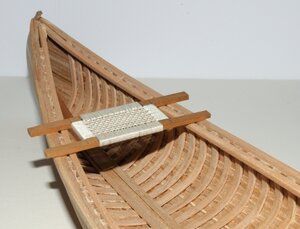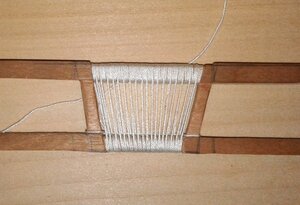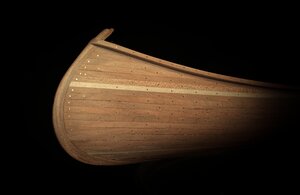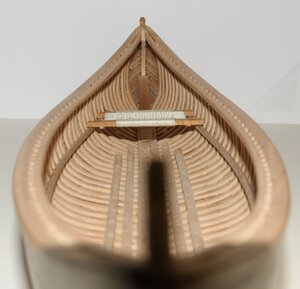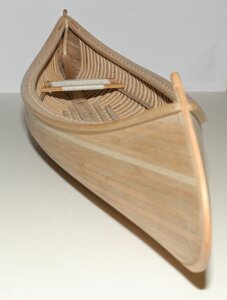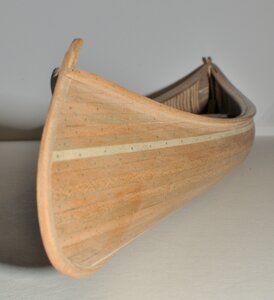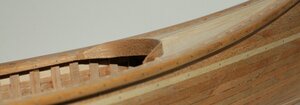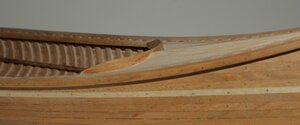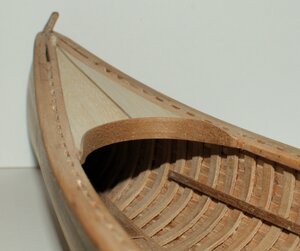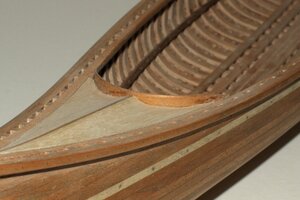When building a full size ribbed canoe:
1st) the form is built (it can be looked at building a canoe inside a canoe) including the inner gunwale.
2nd) the ribs are bent and secured over the form.
3rd) the planking is then installed and fastened to the ribs
For practicalities the sequence is reversed for the model.
The model can also be built without the ribs if one chooses...
Notes:
Traditional ribbed canoes were built using wide, none continuous planks as opposed to strip planking from one end to the other: the model is strip planked.
The ribs were most often wider and tapered from bottom to top (wider at bottom of the vessel). They were also one piece ribs running from one gunwale to the next on the other side: the ribs on the model are installed in halves, continuous width.
The planking was secured to the ribs by way of clinched nails.
And lastly:
The model is a combination of different things. Again it is not traditionally / historically correct in the building method or look. The construction of such craft can be adapted to the wishes of individual builders.
This is merely an introduction to strip planking with a "twist".
It concentrates on one planking method and should be looked as an introduction to model building where the builder will learn about working with wood, cutting, bending, gluing while fine tuning attention to details: especially ending up with a clean model that hopefully many will find as being an aesthetically attractive end-product. From there, the builder may use his or her own artistic licence and make his model a one of a kind piece of art.
Here is what I wrote in the introduction page and what really should be the "take way" from this entire project.
Our models are often built to accurately represent a historically correct piece,
but in some cases we should allow ourselves some liberties by allowing our own
creativity to take over in some way: and small crafts, such as canoes are perfect for that.
Somewhere, being creative is part of model building.
The nice thing about building such model is that there is really no constraints in following "anything to the letter".
- The novice can learn some basics and have fun at the same time.
- The more experience (intermediate) builder can fine-tune his or her techniques and have fun at the same time.
- The experience (advanced) builder does not need any of this but still may find some inspiration or motivation and have fun at the same time.
All along, there is a common thread: have fun...
G

